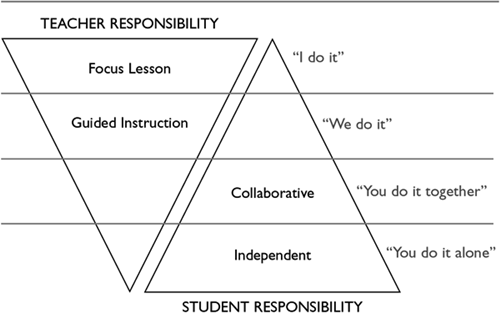I used to have this recurring nightmare where I would show up to school late (like “the principal is covering my class” late) with no idea what I was going to teach that day. Once I scrambled to find something for my students to focus on giving me time to regroup, I realized that I was not dressed for the day. I was in my pajamas! Recently, my previous nightmare has slowly been replaced with one where I plead with my students through a webcam to please let me see their faces. Please answer my questions. Please let me know, “Are you with me?”
Hybrid and virtual teaching have changed the face of education. Teachers have had to quickly (more like INSTANTLY) learn to translate everything that we do to a digital learning space. The challenges have been countless, but one of the challenges that we may have the ability to affect is checking for student understanding.
“Are you ready to move on?”
While virtual and hybrid instruction have changed the look of learning, teaching, and education as a whole, there are some practices that continue to hold true. One of those practices is the marriage of checking for understanding (CFU) and the gradual release of responsibility. This partnership ushers students toward independence but only as they are prepared for that progression.
Have ever found yourself saying:
- “I just went over that.”
- “Why didn’t you tell me that you did not understand?”
- “Do you know what you are supposed to be doing now?”
If so, you may have seen signs of a need to check for understanding as your students progress toward independent application of a skill. As you move from teacher-centered, direct instruction to guided practice and collaborative learning, it is imperative that you assess for student readiness. Are they ready to apply what they just learned?
In the digital classroom, this assessment can be more complicated. You seldom get to see the looks of confusion or the uncomfortable body language. You do not have the luxury of casually looking over shoulders to assess work quality or even determine if they are listening at all as the abyss of named black cubes stares back at you.
Checking for understanding is most important when preparing to release students to apply skills independently. Undoubtedly, the independent application of skills is the most challenging stage of the gradual release of responsibility. It is the point in your instruction when students are asked to “show what they know.” Oftentimes, when the product of this stage reflects a lack of understanding, teachers question the quality of instruction or even resort to student blame. However, this outcome can simply be a direct result of premature release. The student was not ready to try it on their own. This error can be avoided by embedding CFUs throughout a lesson.

There is undoubtedly a need for this type of ongoing assessment of student learning and understanding, but how it looks through a tiny webcam is a different beast. There are a variety of ways to check for understanding at a range of points in your instruction. Some are forms of self-assessment while others are more rigorous. Based on the desired outcome, teachers can conduct a number of different types of CFUs.
Checking for understanding is an imperative part of the formative assessment process. It is a low-stakes opportunity for students to inform their teacher of their needs and for teachers to use the feedback to guide and differentiate instruction. It provides a snapshot of where the student is in their learning in real-time providing evidence related to the learning goals.
“What do I do next?”
You are probably already checking for understanding throughout your lessons. Some ways that teachers do this are:
- leading questions (when the answers to the question are obvious or easily determined therefore providing an inaccurate assessment of understanding)
- requests for questions (oftentimes, confused students do not even know what questions to ask for clarity)
- rhetorical questioning (“Got it?” is especially ineffective when confused students are eager to just get the lesson moving on).
This type of checking in is a great place to start the process but the outcome may be a hollow, surface level assessment of student understanding. There are a number of methods that can be implemented with ease into your digital (or in-person) instruction that yield valuable feedback from students in real-time allowing you to make quick modifications to your instruction or help to plan for future instruction.
“Raise your hand if…”
In the CFU Toolbox, you will find a number of tried and true methods of checking for understanding that can give teachers a real glimpse at students as they work toward independent application of skills. (If you are interested in learning more about these tools and strategies, be sure to look out for my upcoming OnDemand content with Keep Indiana Learning). While these methods are initially catered to the digital classroom, they can be implemented in the in-person setting as well. The CFU Toolbox is not an exhaustive list of ways to CFU in the digital classroom; it can act as a starting place for innovative, creative teachers to begin painting a picture of their online students’ ability to grasp a concept.
One very quick and effective CFU method included in the toolbox is a “chat blast.” In a “chat blast,” an open-ended question (one that can be answered quickly) is posed to students. The teacher then asks them to type their answer in the chat but not to submit until you say “Go!”.
After giving a countdown, you will see the chat explode with answers! This allows for students to answer questions without waiting for hints and clues from classmates. Because the question is open-ended (and hopefully not “Googleable”), you can capture a quick snapshot of understanding before progressing in instruction. An ELA teacher could request, “Use a simile to describe your morning” to check for understanding of figurative language. A math teacher might post an equation with an error and asks students to explain where things went wrong. A science teacher may ask for the next step in a process. The options are limitless!
“Got it?”
In the digital space, many factors must be considered to collect authentic student feedback:
- CFUs need to be open-ended when possible to avoid the dreaded “Google-Searched Answer”
- CFUs should be quick so the feedback can be used swiftly
- CFUs should be more work for the students than for the teacher (this isn’t the time for leading and prompting)
- CFUs should be ongoing—they are definitely not a “one and done” form of assessment
- CFU in the digital classroom may need to occur more frequently than in an in-person setting as there are so many more barriers to learning and assessing
So fist to five, how ready are YOU to implement CFU in your digital classroom?
Resources
Please login or register to claim PGPs.
Alternatively, you may use the PGP Request Form if you prefer to not register an account.



